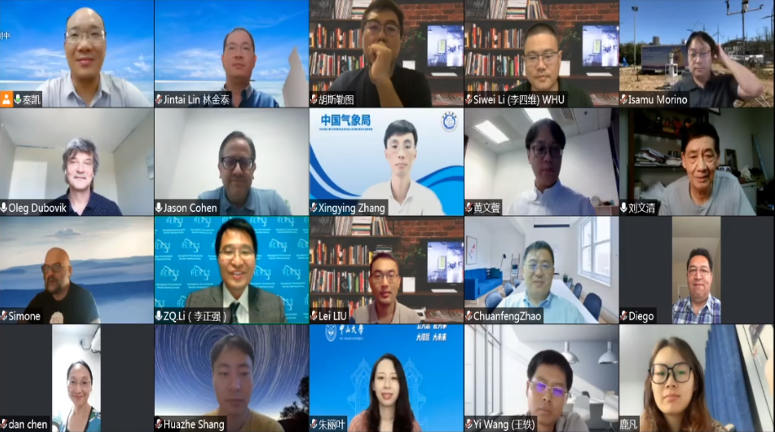Atmospheric Environment Remote Sensing Society Launched to Promote International Cooperation
On July 15, 2022, the inauguration of Atmospheric Environment Remote Sensing Society (AERSS) and the inaugural meeting of its working groups was held in Beijing in a combination of online and offline approaches. More than 50 experts from over ten countries and regions in the fields of atmosphere, environment, and remote sensing attended the meeting, which was presided over by Prof. LI Zhengqiang from the Aerospace Information Research Institute (AIR), Chinese Academy of Sciences (CAS).
Representatives of AERSS Advisory Committee, Prof. LIU Wenqing, and Prof. Oleg Dubovik delivered congratulatory speeches, emphasizing the importance of remote sensing technology to the study in the fields of atmospheric environment, climate change and sustainable development, addressing that AERSS is committed to exploring the application of Atmospheric Environment Remote Sensing in the fields mentioned above and takes into account the construction of an exchange network keeping international academic relations as the core.

Figure 1. Prof. LIU Wenqing (left) and Prof. Oleg Dubovik (right).
As the representatives of newly elected council members of AERSS, Prof. Diego Loyoda from the German Aerospace Center, Prof. Simone Lolli from the Institute of Methodologies for Environmental Analysis-CNR, Prof. Eduardo Landulfo from the National Nuclear Energy Commission of Brazil, Prof. Khan Alam from the University of Peshawar, Pakistan, Prof. Isamu Morino from the National Environmental Research Center of Japan, and Prof. Yong Han of Sun Yat-sen University delivered speeches respectively.

Figure 2. Prof. Eduardo Landulfo of the Institute of Methodologies for Environmental Analysis, CNR in Italy, Prof. Khan Alam of the University of Peshawar in Pakistan, and Prof. Isamu Morino of National Environmental Research Center of Japan, etc delivered speeches on behalf of the council members.
Prof. LI Zhengqiang as the president of AERSS, introduced the organizational structure of AERSS, the composition of 10 working groups and ECPC committee, and issued letters of appointment to the co-chairs, co-chairs of the working groups and the ECPC committee.
Prof. Li emphasized that remote sensing technology can facilitate comprehensive and accurate dynamic monitoring of atmospheric, pollution, and other environmental conditions and their trends on a large scale. The launch of AERSS reflects the international community's attention to the prevention and control of environmental problems as well as China's growing awareness of ecological environmental protection.
AERSS is committed to building international cooperation and exchange platform in the fields of remote sensing, atmosphere, and environment for important environmental issues related to mankind, and to creating sharing and cooperation mechanisms for experts, scholars, graduate students and other stakeholders with common interests.

Figure 3. Discussion Session.



News & Events